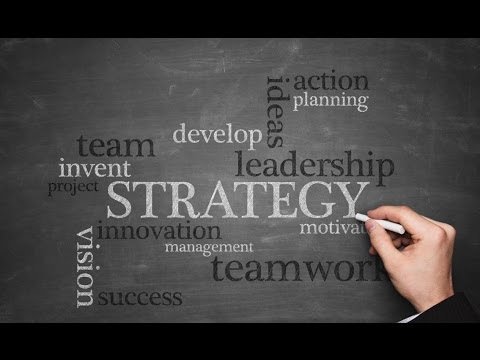
12.1 Introduction
It's important to prepare a work plan prior to starting any major project.

Extending the logic, work planning helps you maximise productivity during a typical workday. Work plans should all be reviewed in stages and should be printed and shared as soon as you have finalised your plans/ideas. Transparency is a key component of work planning. Work planning is an innovative approach to organising workflow in a company. Team members work together with minimal necessity for supervision. Cooperation and coordination are two important hallmarks of work planning strategies.
Work plans may often be presented in the form of a proposal as they may not always go according to plan. Budgets need to be approved and other work can be conditional, depending on several factors, including the number of participants in the project. Is the project you are planning going to include a group of people, your boss or just yourself? A consistent work plan helps staff members of an organisation plan their work within the available framework of capital and human resources.
Why is work planning considered an important organisational tool?
1. Planning helps define goals for the organisation and also helps define the steps that will help achieve the goals.
2. Organisational success is achieved by investing time and effort in planning. Planning helps identify constraints and probable limiting factors that may arise along the way. Thus, work planning helps minimise the risk of uncertainties.
3. Work planning helps establish realistic goals, conserves resources and maximises team effort.
Contrary to popular perception, work planning does not apply only to project managers and senior management. Personal Assistants or PAs need to plan their own work and in addition, they often need to plan other's work too. Work planning is an extremely useful tool for a PA to be able to work well.
In the face of inadequate planning, you can experience a busy, exhausting day at work without accomplishing much. PAs (or other workplace professionals for that matter) are constantly bombarded with interruptions, last-minute requests and meetings and this can make it difficult to focus on important goals. Planning the day ahead helps allocate specific time slots and priorities to important tasks.
Work planning offers multiple benefits:
. You are able to understand what you can achieve realistically in a given time frame
. Planning helps avoid taking on too many tasks that could disrupt your concentration and waste your time
. You can look forward to an increase in the level of accomplishment and work towards your goals
. Planning helps you achieve a work-life balance that leaves you with more time for yourself.
Assess where you would like to be at the start and ending of a project. You must assess and generate which steps need to be taken in order to start processes and keep them running, while minimising risks and uncertainties. Regular review of work plans with your boss or colleagues helps ascertain that schedules are going according to work plans.
A work plan can be drawn out for any specific time and should be able to identify problems that need to be resolved. Work plans are standard management tools and can help you execute your role as a personal assistant. As you continue to execute the work plan, it's natural to find yourself on a learning curve.
12.2 Work Planning Skills

Work plans are not restricted only to budgets or schedules.
Dealing with partial information:
Although we would ideally like to plan with full knowledge of data, this does not always happen. As a personal assistant, you may sometimes be in possession of only partial information. For example, you may be aware of a meeting in the office the next day, but some members may have not yet confirmed their attendance.
Identifying and recognising contradictory information:
Information may not always be present in a cohesive and flowing format. For example, your boss may be scheduled to meet with a client the following day, but you may receive a message to the contrary from them.
A PA's job often involves sifting through contradictory pieces of information and finding out the true facts.
Recognising unreliable information and avoiding basing assumptions on it:
For example, a supplier may not be able to guarantee delivery of raw materials due to bad weather. In this event, you may not be able to plan to update your inventory due to the unreliability of delivery dates.
Using intuition and past experience to make decisions:
A PA's job involves planning the day or tasks based on his/her intuitive knowledge of colleagues, bosses and customers. Your personal knowledge of habits, inclinations and preferences help you plan tasks, meetings and processes.
Examining alternate courses of action in the event of a change in schedule:
A successful PA always has a 'plan B' in case the original plan cannot be executed. Shifting schedules, changing appointments and a conflict of goals can sometimes require the implementation of alternate plans.
Planning smaller administrative tasks:
Many times, you may have to oversee the execution of smaller tasks while keeping in mind the bigger picture. Administrative tasks such as responding to client correspondence and filing invoices may need to be done on a daily basis. These tasks may not relate directly to a project or task, but they are important.
Planning your work involves managing a range of tasks that are associated with different levels of responsibility and importance. Work at the office often follows its own ebb and flow; at times, you may be extremely busy while other days may be much less busy. Quiet periods do not imply that there are no tasks to be done; it simply means that there are no immediate looming deadlines.
Plan your list of tasks by creating a master list followed by weekly and monthly lists. Work planning can be done through formal as well as informal means. For example, Excel sheets, Gantt charts, etc. represent formal planning tools. Informal planning can be done by using a good old diary. You can plan time to check emails and messages. It's not necessary to respond to each email at this time; you can read them through - this will aid in further planning your day. As far as possible, use pencil to make diary entries; this way they can be rubbed out if there are any changes.
In fact, it's also advisable to schedule time-slots for returning or making phone calls. It's best not to make them in a random way as and when you remember.
Tips for Creating Work Planning Lists:
. Opt to write complete lists. Avoid depending on post-it notes
. Make out work related as well as personal lists. This will help you get an idea of the overall picture and you are better placed to strike a balance between the two
. Update your list regularly and cross off completed tasks
. Mark a star next to complex tasks; this will help you allocate time more efficiently. You will also experience a feeling of accomplishment once you have completed the task
Emergencies are rarely announced through email. You will receive a phone call and based on the information, you may have to plan further. Checking email does not count as an urgent task. Messages need to be checked, but you can easily plan your time-slot for attending to them. Plan to keep aside a quiet 15 to 20 minutes each day completing smaller, but important tasks. Use this time to review your work plan lists and update them.
Work plans are very similar to proposals, but the difference is that a work plan is based upon a project that has already been approved. It identifies a specific time segment for a programme or project. A work plan will identify goals, problems that need solving, describe precise objectives, have an indication of all resources that will be needed and strategies of how to implement work plans with minimal setbacks.
A work plan is a justification of all needs to make the plan a success, it should be digestible and transparent to all staff who are going to be involved. A work plan includes goals, targets, managers, customers, capital availability, planning staff, boards and committees.
Here is an example outline of a work plan
1.An executive or abstract summary
2.An introduction of the background of project
3.All resources and any other inputs/constraints
4.An action plan/strategy
5.All appendices including budget, schedule and other things
Introduction and background profiles
If you are preparing a short work plan, then the introduction and background can be combined into a single short chapter. A complex work plan may be easier to follow if it is separated into readable paragraphs or chapters.
A background would begin with a logical explanation that will help identify objectives and goals. The plan should offer insights into how objectives can be achieved or attained during planning periods. The background should contain relevant information pertaining to the process. While it needs to be as detailed as possible, keep irrelevant facts out of it.
Your work plan background should ideally include:
. Necessary information from the previous months that lead up to the current date.
. All relevant changes in the working environment or factors that could have a possible effect on the project.
. All relevant effects and results of project activities that may call for changes in project design.
. All appropriate documents, policies and programmes.
. Any other needed reference material. All expected output for the planned working period.
Activity 1 - Practise Creating Work Plans
Estimated time: 10-15 minutes
You previously learned several important organisational tools that will help you become a successful personal assistant. You just learned about work planning, which is another tool that is key to organisational success.
Before starting any work project, you should create a work plan to guide you, define your goals and minimise the risk of uncertainty. After taking a few moments to review what you learned, select a personal or professional project and draft a coordinating work plan. What are some things that you need to consider?
12.3 Avoid Repeating Information from the Background in
the Main Proposition.
Your work plan should have a logical progression from introduction to background.
The background will display the selection of problems to be solved; the goals will define a solution to all mentioned problems. Objectives should be very precisely laid out. Goals should be realistic and doable.
Objectives need to be chosen carefully from the project document or initial proposal when discussed with colleagues. They may be derived from new problems that have risen or identified through client or staff feedback when your company had the opportunity to conduct previous progress reports.
Activity 2 - Practise with Actionable Plans
Estimated time: 10-15 minutes
You should have a sample work plan, which you created for a personal or professional project in your life. It should include time constraints of your project, goals and how you will complete your goals.
In this next activity, you will add strategy and action points to your work plan. The first thing you should do is review what you entered in the first activity and identify any potential problems or constraints. Now, you will need to minimise these uncertainties; how can you add strategies in your work plan to ensure that you reduce risks?
12.4 Strategy and Actions

Strategy and action points help transform plans into results.
Assess constraints and hindrances that may be experienced during the task and the different ways to resolve problems. Offer a short description of how each potential problem will be facilitated and dealt with. The explanations should contain details of tasks as well as the personnel who will help with the resolution. This detailed analysis helps minimise confusion and time-lags.
The resources section should indicate the different potential input data and explanation of how they are expected to contribute to achieving the listed objectives.
Direct the attention of staff and colleagues towards the limitations of the budget. Include every possible resource that may be needed - staff, materials, time, man-hours, consultants, supplies and all other inventory related to the execution of the task.
All work plans are going to differ slightly and will depend on the nature of task and the industry that you work in.
A typical work plan would look like this -
. A background that identifies all problems.
. Objectives that help refine goals, specifics and variables.
. Resources, constraints and what can be done to reach and achieve them.
. A strategy that includes specific or precise actions. Indicate the expected level of output from each work plan.